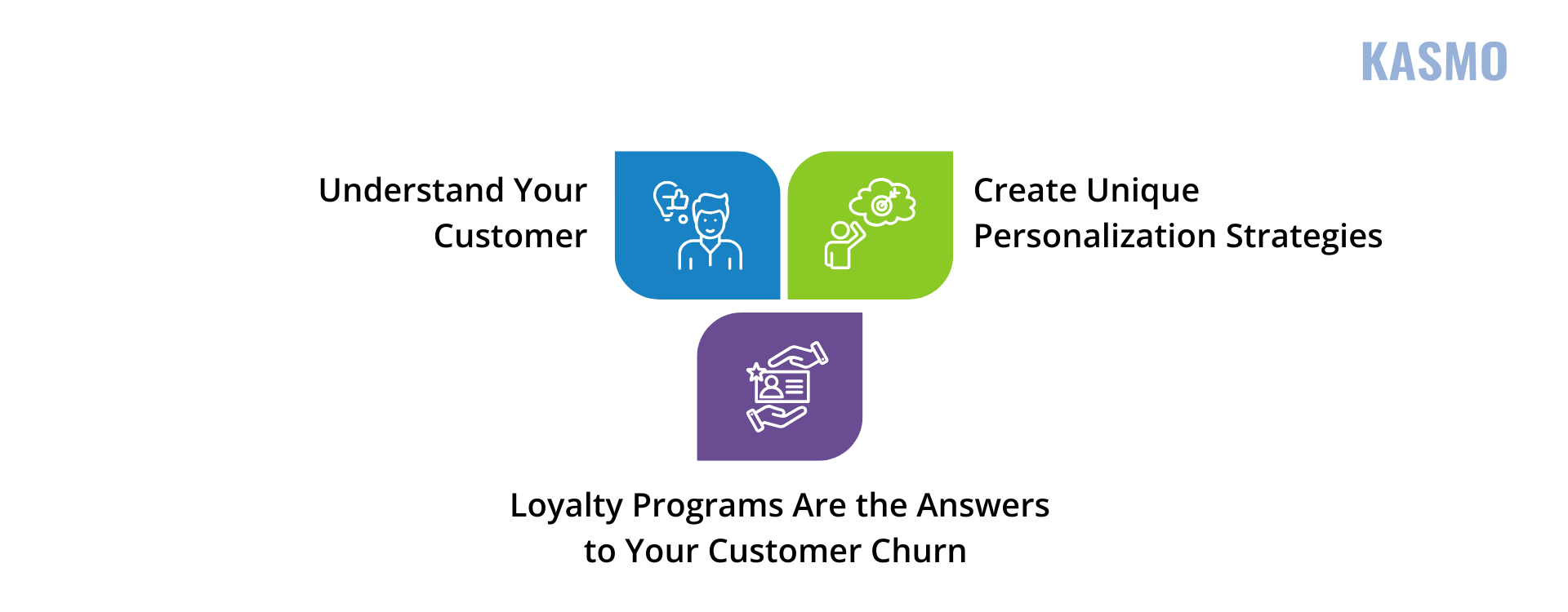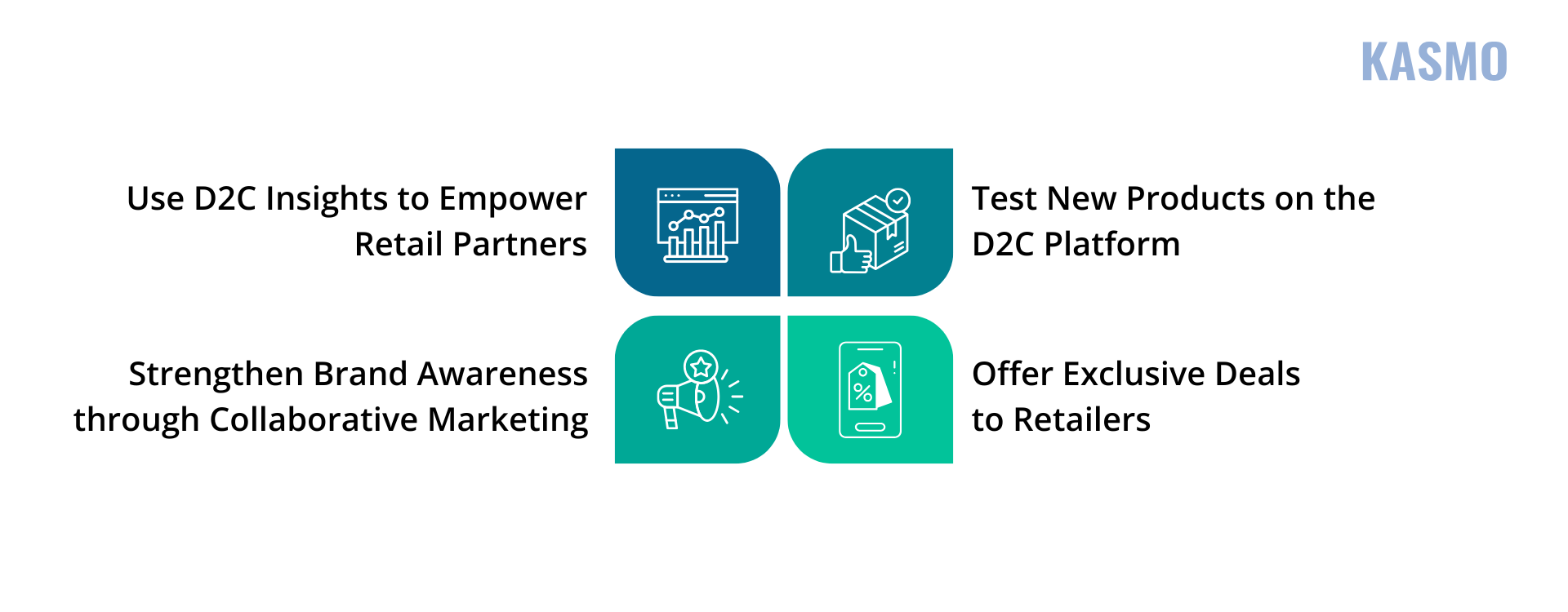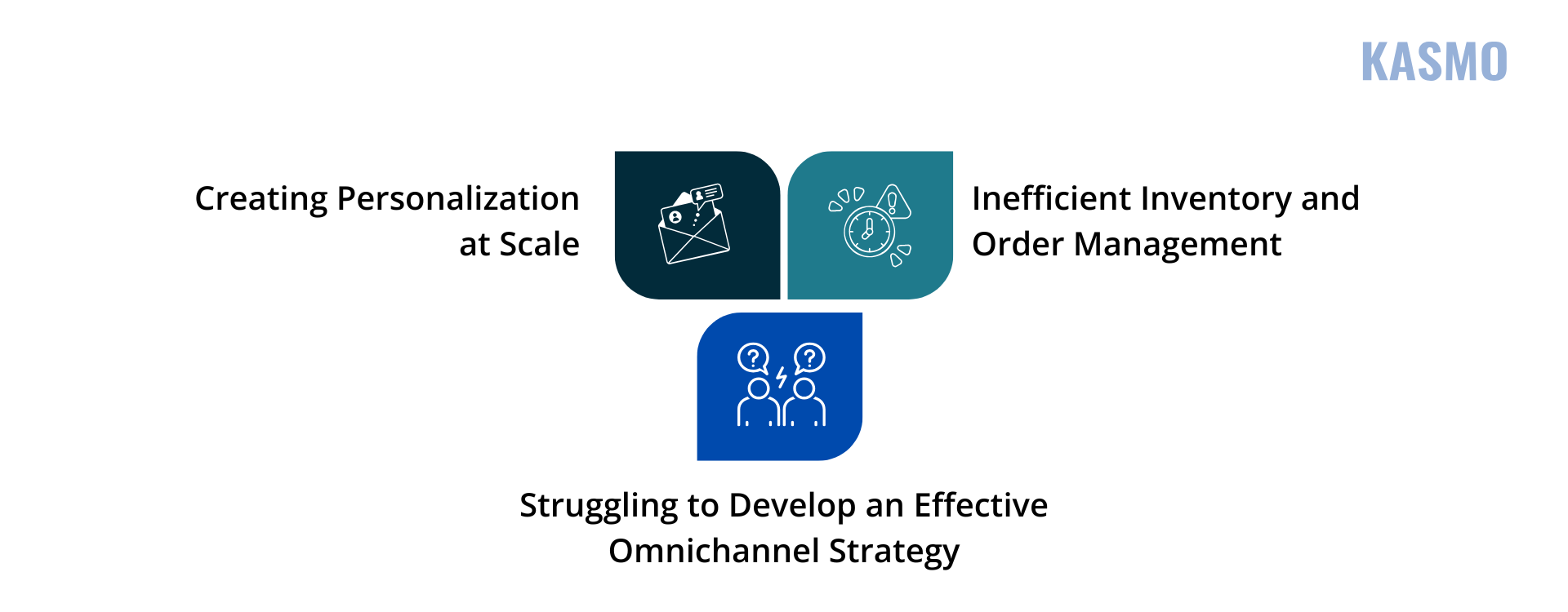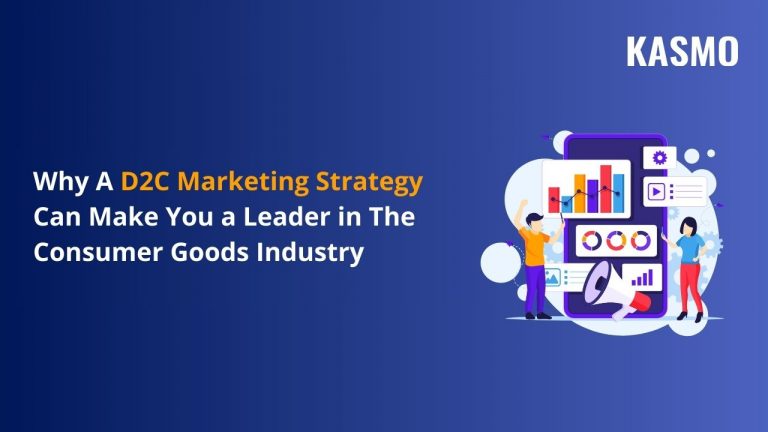Introduction
In recent years, consumer-packaged goods (CPG) companies have seen a shift in how they approach their business strategies. According to a survey conducted by Salesforce, 77% of Consumer Goods (CG) companies expect to increase their marketing spend over the next two years. CG companies are leaning towards more digital marketing initiatives to close any gap between the consumers and the brand. But why were there gaps between the consumers and CG brand if they had retail partnerships in the first place? Due to a lack of a (Direct-to-Consumer) D2C Marketing Strategy.
It was observed that traditional retail partnerships were not creating many new opportunities. As consumers are increasingly moving to digital platforms and prefer to purchase and communicate with brands through websites and other channels, CPG companies realized that they need to build a more direct relationship with the consumers to understand them better.
As 61% of consumers say they’ll shop more during the next three years, it opens numerous opportunities for CPG industry leaders to strengthen customer-brand relationships and increase brand loyalty.
D2C marketing strategies have proven to be a valuable tool for CPG brands looking to capture a larger share of the market. By building a robust D2C strategy, CPG companies can create direct connections with their consumers, offering personalized experiences and gaining access to valuable first-party data.
This shift not only boosts customer loyalty but also provides an opportunity for CPG brands to innovate and stay competitive in an increasingly crowded marketplace.
Importance of a Good D2C Marketing Strategy in the Consumer-Packaged Goods Industry
In the consumer-packaged goods (CPG) industry, a well-structured D2C marketing strategy is crucial. With many retailers controlling access to consumer data, CPG brands are recognizing the importance of building their own direct relationships with customers. Retailers often leverage consumer data to create private-label offerings, which can undermine a CPG brand’s position in the market.
However, with a focused D2C marketing strategy, companies can avoid this risk by cultivating direct relationships with their consumers. This enables CPG brands to gather first-party data—which are the insights into customer preferences, purchasing behaviors, and expectations. These are invaluable in shaping future marketing campaigns, product development, and customer service efforts.
By utilizing the power of first-party data, CPG companies can offer personalized experiences that resonate with consumers. When these businesses leverage this data, they can make more informed decisions about product innovations, marketing campaigns, and customer engagement strategies.
Customer expectations are now at an all-time high – making personalization the key differentiator that drives consumer loyalty. A solid D2C marketing strategy enables companies to engage customers the way they want, whether through personalized offers, targeted content, or seamless shopping experiences. This prevents businesses from sharing a one-size-fit-all approach to all of their customers. With offers and recommendations tailored to every customer’s needs, CPG brands can protect their brand reputation.
3 Easy Steps to Build the Best D2C Marketing Strategies – Here’s Why You Cannot Miss!
Building a successful D2C marketing strategy for CPG brands requires a combination of data-driven insights, creative approaches, and an unwavering focus on customer needs. Follow these steps to create your unique D2C marketing strategy:

Understand Your Customer
The first step in developing an effective D2C marketing strategy is understanding your consumers. This begins with collecting first-party data from multiple touchpoints, including e-commerce sites, loyalty programs, and customer service interactions. Consumer behavior insights gathered through surveys, browsing habits, and social media interactions can help companies understand consumer preferences and pain points. By analyzing these data points, CPG brands can identify key segments within their target audience and develop tailored marketing campaigns that speak directly to their needs.
Create Unique Personalization Strategies
Once CPG brands have a firm understanding of their customers, they can focus on building personalized experiences that keep consumers engaged. This includes creating dynamic digital content, running targeted ads, and offering personalized product recommendations based on a consumer’s past behavior. Additionally, CPG brands must continuously optimize their marketing efforts by A/B testing content, monitoring engagement metrics, and refining strategies based on real-time feedback. The goal is to meet customers where they are in their journey—whether they’re discovering new products, making a purchase, or seeking customer support—and provide them with relevant, timely experiences.
Loyalty Programs Are the Answers to Your Customer Churn
Another crucial element to creating a successful D2C marketing strategy is fostering long-term relationships through loyalty programs. Through loyalty programs you can prevent customer churn. According to McKinsey research, increasing customer retention rates by just 5 percent could help increase profits by 25–95 percent.
By incentivizing repeat purchases and rewarding brand advocates, CPG brands can deepen consumer loyalty and turn one-time buyers into lifelong customers. If loyalty programs are created keeping a “customer-first” approach, 80% are more likely to choose that brand over competitors.
Leveraging first-party data also helps brands track customer behaviors and preferences, ensuring that loyalty programs are tailored to individual needs, maximizing customer satisfaction and lifetime value.
How Can CPG Companies Maintain a Strong Relationship with Retail Brands?
While a D2C marketing strategy provides many benefits, CPG companies must also consider the potential impact on their relationships with retail partners. Retailers often view the expansion of D2C channels as a threat, concerned about market oversaturation, price competition, and conflicts over target audiences.
However, when handled correctly, D2C marketing strategies can complement existing retail partnerships and drive mutual growth. Here are several ways CPG companies can foster strong relationships with retail partners while growing their D2C business:

Use D2C Insights to Empower Retail Partners
A major advantage of using a D2C business model is it empowers CPG companies to gather valuable consumer insights. These insights—such as customer preferences, buying patterns, and product performance data—can be shared with retail partners to re-visit their strategies. For example, if a particular product is performing exceptionally well on your D2C platform, sharing this information with retailers can help them anticipate demand and adjust their inventory accordingly. This collaboration can result in better stock inventory, leading to increased sales for both the retailer and the CPG brand.
Test New Products on the D2C Platform
Launching new products through the D2C channel is an effective way to test market response before introducing them to retail partners. The feedback and performance data from D2C sales can help you fine-tune product offerings, pricing, and marketing strategies. Once a product is validated, CPG brands can offer it to their retail partners with confidence, providing them with high-demand products that are more likely to succeed in-store.
Strengthen Brand Awareness through Collaborative Marketing
Investing in brand awareness is crucial for both CPG companies and retail partners. By coordinating marketing campaigns across D2C channels and retail, CPG companies can amplify their brand presence. Increased brand visibility can drive in-person traffic to retail locations, benefiting both the brand and its retail partners. Additionally, collaborative efforts like co-branded promotions or joint advertising campaigns allow CPG companies to reach a broader audience while strengthening their retail partnerships.
Offer Exclusive Deals to Retailers
To avoid conflicts over pricing, CPG brands can create exclusive promotions specifically for retail partners. Offering special deals or products that are available only in physical stores helps CPG companies maintain a uniqueness in front of their customers.
How Can CPG Companies Navigate D2C Challenges?
As CPG companies shift from traditional retail models to D2C channels, they face a unique set of challenges. Unlike selling through intermediaries, a D2C marketing strategy requires businesses to engage directly with consumers, each with their unique expectations and demands. Navigating these challenges successfully requires a strategic approach, leveraging advanced technologies, and staying agile in response to evolving consumer preferences. Here are some key challenges CPG companies face:

How Can Salesforce Agentforce and Marketing Cloud Address These Challenges?
To maximize the impact of a D2C marketing strategy, CPG brands can turn to advanced tools like Salesforce Agentforce and Marketing Cloud. Salesforce has designed these platforms to help businesses leverage AI Agents and automation to streamline their marketing efforts, personalize customer interactions, and drive higher ROI.
Salesforce Marketing Cloud provides a powerful suite of tools for segmenting audiences, delivering personalized content, and tracking campaign performance. By integrating first-party data from various sources, CPG brands can create a unified view of each customer, enabling more targeted and efficient marketing. AI-powered insights from Salesforce Marketing Cloud allow companies to refine their strategies continuously, ensuring that every interaction—whether through email, mobile, or social media platforms—resonates with consumers and drives meaningful engagement.
Salesforce Agentforce further enhances the D2C marketing strategy of a CPG company, by enabling businesses to deliver personalized, automated customer support. With Agentforce, CPG brands can provide real-time assistance to consumers across multiple channels, including chat, email, and social media. By automating customer service tasks, brands can focus on high-priority interactions, improving both customer satisfaction and operational efficiency.
With Agentforce’s AI Agents CPG brands can proactively resolve customer issues, provide tailored product recommendations, and gather valuable insights for continuous improvement.
If CPG brands leverage both Salesforce Marketing Cloud and Agentforce, then they can personalize the entire customer journey—from acquisition to post-purchase engagement—creating a seamless experience for consumers. By using these tools CPG brands can elevate their D2C marketing strategies, driving higher conversion rates and enhanced customer loyalty.
Conclusion
CPG companies that invest in a strong D2C marketing strategy can position themselves successfully for long-term success. By cultivating direct relationships with consumers, brands can harness the power of first-party data to offer personalized experiences that build loyalty and drive sales.
Leveraging tools like Salesforce Marketing Cloud and Agentforce further enhances this strategy, enabling brands to automate, optimize, and scale their marketing efforts. Having a D2C marketing strategy in place is not just about selling products – it’s about building trust, engaging customers on a deeper level, and ensuring that every interaction adds value. With the right strategy in place, CPG brands can thrive in an increasingly competitive market and secure a lasting connection with their consumers.


